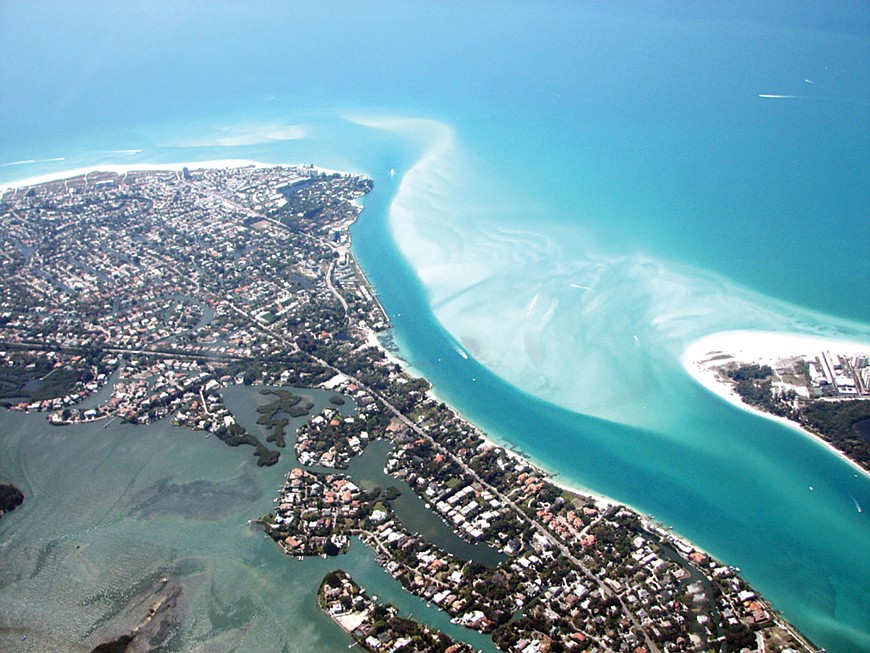- January 19, 2026
-
-
Loading

Loading

How long will this go on? And to what end? To have a segment of Siesta Key residents forever resentful, and perhaps enemies, of the city of Sarasota and Lido Key residents? To be engaged in constant strife and litigation?
Five years from now, then what? The confrontations and litigation flare up again? And five years after that? And five years after that?
These questions come to mind in the wake of Florida Administrative Law Judge Bram Canter’s recommendation that the Florida Department of Environmental Protection issue a permit to allow a portion of Big Pass to be dredged to provide sand to renourish Lido Key’s beach.
His ruling came already five years into this fight.
Predictably, Sarasota City Manager Tom Barwin and Carl Shoffstall, president of the Lido Key Residents Association, were thrilled, while Peter van Roekens, chairman of Save Our Siesta Sand 2, told the Sarasota Observer his group would take its opposition to federal court if DEP ultimately approves the dredging.
It was of little consolation to the Siesta Key side that Judge Canter recommended the area to be dredged be reduced and the amount of sand be scaled back to 1.3 million cubic yards from 1.7 million cubic yards.
Nor was it assuaging to the Siesta Key interests that, in Judge Canter’s reading of the evidence that the city’s and Army Corps of Engineers’ application for the permit “included sufficient technical information and analysis, including the modeling of morphological trends … that the proposed project complies with all applicable criteria for approval …”
The judge had one caveat: that the dredging would have adverse effects on the spawning of spotted sea trout unless the permit is modified to encompass a smaller area and prohibit dredging between April and September. He said nothing about adverse impacts on Siesta Key property.
But here’s the rub: Yes, the city and Corps have a judge’s imprimatur that their permit application meets the state’s legal and technical thresholds for approval. But the heart of the matter still remains: No one can say what ultimately will happen “downdrift” after Big Pass is dredged.
Scientists and engineers can make computer-induced, educated predictions that dredging Big Pass will not adversely affect Siesta Key property and beaches. But there is a good reason for that old saw: Never fool with Mother Nature. You never know. Ask the residents of Leilani Estates in Hawaii.
Thus the stand-off: Siesta Key residents say, “Don’t risk it. Why risk dredging the pass if there are rational alternatives?”
Apparently, the city of Sarasota doesn’t care about that risk or the alternatives. For the city, apparently, that pile of sand in Big Pass can be had at a better price than sand from other locations in the Gulf. And City Manager Barwin repeatedly has said, that sand is “our sand” — driven south from Anna Maria Island, Longboat Key and Lido Key by the littoral waves. And so the city, as it has demonstrated for five years, is willing to expend and endure the time, legal fees and strife to dredge it. Other choices be damned.
City Manager Barwin said in response to Judge Canter’s recommendation: “I urge Siesta Key petitioners to consider discontinuing the time-consuming and costly litigation and work with us to protect all of Sarasota County’s shorelines for the next 50 years (italics added).”
But when you talk to Siesta Key residents who have been involved in this dispute, they will tell you they haven’t felt for five years that Barwin is willing to work with those who oppose the dredging.
As one of the Siesta Key advocates told us: “We have always acknowledged that Lido Key needs a plan.” But the city “fought throughout the coastal advisory meetings.” And: “They have chosen the most destructive thing they could. Why would they choose to do that when there is more sand available in other areas of the gulf? Why would they want to focus on an area that we’ve tried to protect and clean up for the past 35 years? There’s clean, clear water. Scallops are back. Why change that if you don’t have to?”
Decision-making is all about making choices that produce the best and least damaging consequences. And cost is not always measured in dollars. If you use those two concepts as rational guides, you could argue the city and Corps of Engineers are not too late to ask themselves: What is the right thing to do? Their answer should go beyond evaluating what is best for the city. Whether to dredge Big Pass is more than taking sand for the city; it’s a city and county issue.
You also could make the case that beach maintenance — from Anna Maria Island to Longboat Key to Lido Key to Siesta Key to Casey Key to Manasota Key — is a regional issue worthy of coordination and planning, much the way the regional planning councils look at transportation.
Everyone knows all of the beaches from Manatee through Sarasota counties need renourishment every five to seven to eight years. Why fight over it? Why pit taxpayers against taxpayers?
While we loathe the idea of creating more government bureaucracies, there is a better way to allocate the scarce resource of sand than through contentious court battles pitting neighbor against neighbor, city against city, county against county. There is a better way than the expensive, wasteful, time-consuming state permitting process.
We have advocated before for better leadership to this end. The first steps toward that would be for:
Those steps would be far better than enduring the exasperating battles of governments fighting and litigating among themselves and against the people they represent — wasting the precious resource of taxpayer dollars.